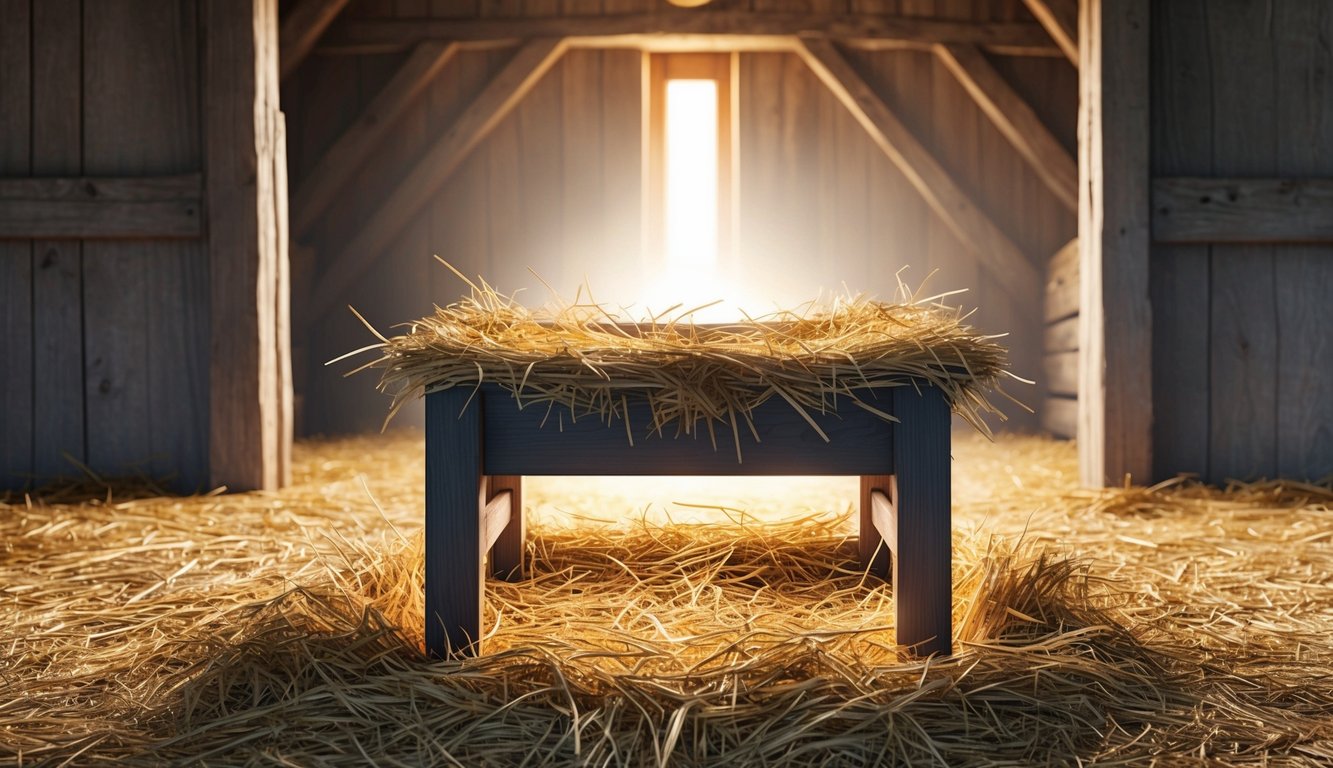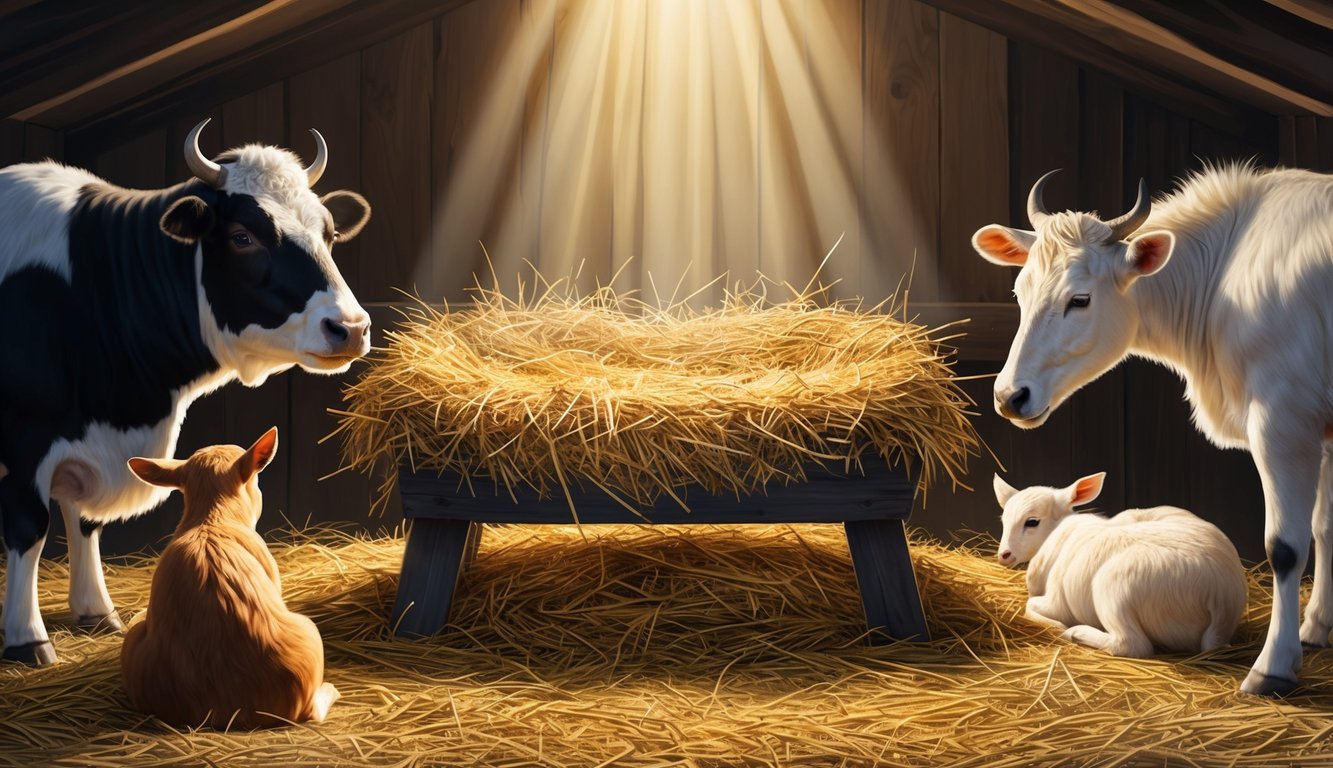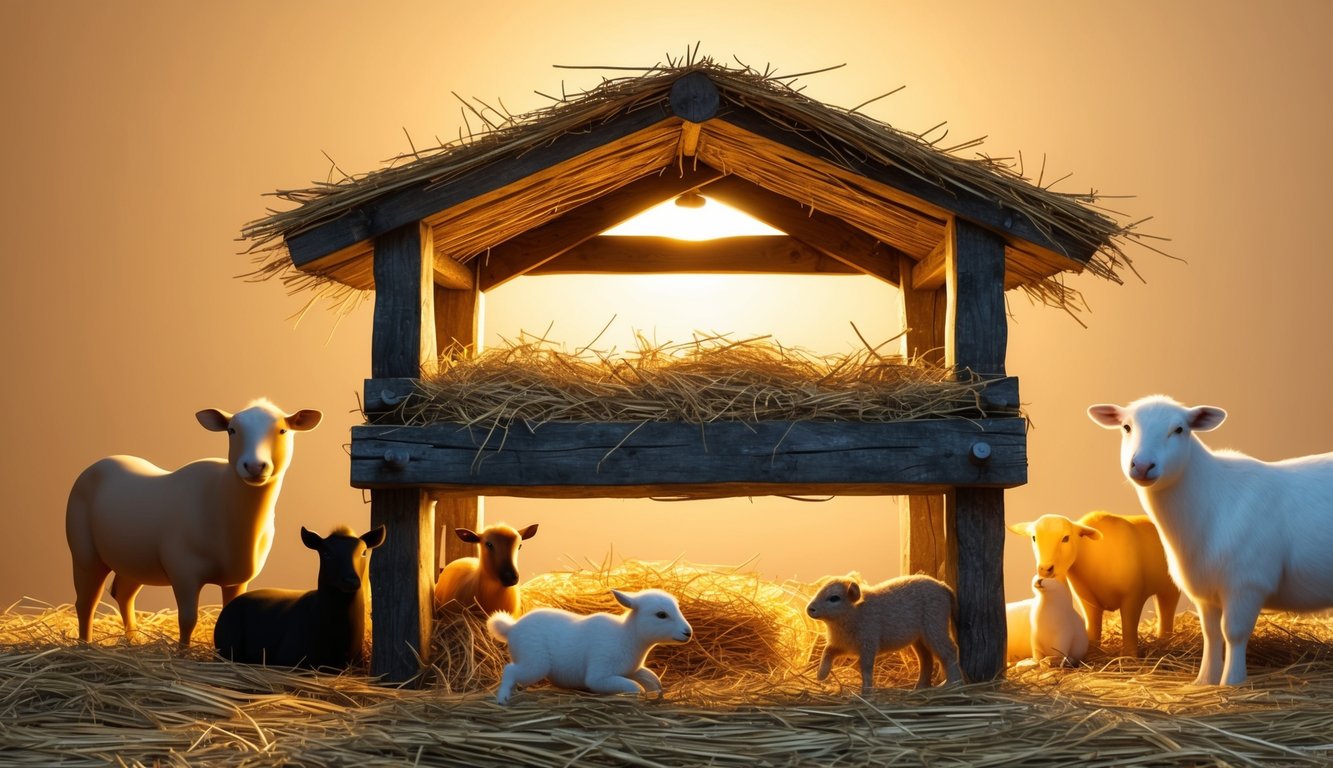Don’t Miss Out On This Unique Astrological Opportunity
Are you tired of spinning your wheels and getting nowhere? Simply put, you’re out of sync: you’re out of alignment with your astral configuration.
But: there’s a kind of map that can help you reclaim your alignment. Think of it as your own personal blueprint to success and happiness: a blueprint that will help you live your most amazing life.
Get started here.
When you hear the word “manger,” you might picture a cozy barn scene with hay scattered around.
In the context of the Bible and Christianity, a manger takes on a much deeper meaning.
A manger is a feeding trough for animals, but it’s most famously known as the humble place where Jesus was laid after his birth.
This simple setting emphasizes the humility and simplicity of Jesus’s beginning in the world.
You might wonder why such an ordinary item would play such a significant role in the Christmas story.
The manger symbolizes the idea that greatness can come from the most unexpected places.
In the nativity story, the manger represents a message of hope and humility, showing that no birthplace or circumstance is too small for something extraordinary.
As you read the nativity story, the image of the manger may remind you of how often greatness is found in simplicity.
This symbol encourages us to appreciate the humble beginnings and the underlying messages of hope and love in the Christmas story.
The Historical Context

When you think of a manger, you might picture the Nativity scene.
This story is set in Bethlehem, a small town in the land of Judea.
According to the Bible in the book of Luke, Mary and Joseph traveled from Galilee to Bethlehem to take part in a Roman census.
Once in Bethlehem, Mary went into labor.
Jesus was born and laid in a manger because there was no room at the inn.
This humble setting fulfilled the prophecy of Prophet Micah who said that Bethlehem would be the birthplace of a ruler in Israel.
You can find this prophecy in Micah 5:2.
The manger itself was a feeding trough for animals.
It’s significant because it shows the humility of Jesus’ birth.
Despite being a king, there were no grand palaces—just a simple birth in a town among the clans of Judah.
Interesting Facts:
- Bethlehem Ephrathah is the full name of the town.
- The story highlights the promises of the Old Testament.
In a way, understanding these details allows you to appreciate the rich historical layers within the story.
Whether you read the account in Luke 2:7 or study maps of ancient Israel, each detail adds depth to this well-loved story.
Understanding the Manger
You might picture a simple structure used to hold feed for animals.
In biblical times, mangers were often made of wood or stone and served as feeding troughs for livestock.
The Manger in Ancient Times
In ancient times, a manger was a staple of stables and farms.
It was primarily a feeding trough for animals such as donkeys and cattle.
Constructed from wood or stone, these structures were vital in ensuring that livestock received their fodder.
The word “manger” comes from the Latin “manducare,” meaning “to eat.” The Greek word for manger paints a picture of nourishment and care.
The manger served as an essential part of any stable, making it a crucial part of daily life in ancient agriculture.
Symbolism of the Manger
In Christian tradition, the manger bears deep symbolic meaning.
It’s known as the humble birthplace of Jesus, underscoring themes of humility and simplicity.
The choice of a feeding trough as a crib highlights the importance of humility in faith.
Placing the infant Jesus among livestock in a stable emphasizes His connection to the common people.
This has left an enduring symbol in Christianity, representing accessibility and humility.
Given its role in the nativity story, the manger is a reminder of finding the divine in the ordinary, transforming a simple feeding trough into a symbol of great spiritual significance.
The Birth of Jesus
The birth of Jesus is a pivotal event in Christianity, characterized by humble beginnings in a manger and the fulfillment of ancient prophecies.
Explore the setting and deeper meanings behind this significant event through the details about the nativity and prophecies.
The Nativity Scene
The nativity scene is a snapshot of Jesus Christ’s humble birth.
According to the Gospel of Luke, the Virgin Mary gave birth to Jesus in a stable because there was no room in the inn.
This event, depicted with Mary and Joseph caring for baby Jesus in swaddling cloths, emphasizes modesty and humility.
Angels announced the birth to shepherds in a nearby field, guiding them to visit the newborn Savior.
The use of a manger as a crib symbolized simplicity.
Meanwhile, the Wise Men followed the Star of Bethlehem, bringing gifts of gold, frankincense, and myrrh, acknowledging Jesus as the Messiah and King.
Such scenes are often recreated in nativity displays, reflecting the core messages of Jesus’s arrival.
Prophecies and Fulfillment
The birth of Jesus fulfilled prophecies that foretold the coming of a Savior, highlighted in various parts of the Old Testament and carried into the New Testament.
The prophecy in Isaiah speaks of a Virgin conceiving a child called Emmanuel.
In the New Testament, the Gospel of Luke outlines these events, connecting Jesus’s birth to these ancient predictions.
Mary’s role as the mother of the Son of God was guided by the Holy Spirit, confirming the divine nature of Jesus and His destined path as the Messiah.
These fulfilled prophecies underscore Jesus as the awaited Savior, offering hope and salvation to believers.
Each fulfilled prophecy reinforced the belief that Jesus’s birth was part of a greater divine plan, showcasing the continuity of scripture and affirming Jesus’s place within the Christian faith.
Theological Significance

In Christian theology, the manger carries deep meaning.
It emphasizes the humble birth of Jesus, the Savior, in Bethlehem.
The story of the manger connects important biblical themes, illustrating Jesus as the Lamb of God and the fulfillment of prophecies.
The Manger as a Sign
The manger is significant because it symbolizes humility.
Jesus, honored as the King of Kings, was born in a simple setting surrounded by hay and animals, emphasizing how God’s love transcends earthly power.
This setting highlights the nature of Jesus’ mission, where he comes not as a mighty ruler but as a servant, reaching out to all people.
Angels announced this humble birth to shepherds, marking Jesus not just as any child but as the Messiah.
This news brought joy and hope, showing God’s glory and love for mankind.
The Cross, which comes later, is foreshadowed by this humble beginning, as Jesus would later sacrifice himself for humanity’s sins.
Connecting Old and New Testaments
The manger scene also links the Old and New Testaments through various prophecies about the Messiah.
Isaiah and other prophets of the Old Testament spoke of a Savior born in Bethlehem.
This biblical prophecy is fulfilled in the New Testament narrative of Jesus’ birth.
The presence of the Holy Spirit and the Angel’s message to Mary connects these testaments.
The birth of Jesus fulfills God’s promise, showing the continuity of God’s plan, uniting God the Father’s love with this new, divine intervention.
Jesus embodies both sacrifice and purpose, fulfilling the expectations of the people, just as foretold in ancient scriptures.
Cultural Impact and Modern Depictions

Mangers have influenced both art and literature, playing a key role in how people celebrate and understand cultural traditions such as Christmas.
By exploring nativity art and various literary references, you can see the manger’s lasting impression.
Nativity Art and Decorations
The manger is a central element in nativity scenes, which are popular decorations during the Advent season.
These displays depict the birth of Jesus, known as the Nativity Scene.
Mangers often appear in homes, churches, and public spaces.
They include figures like Mary, Joseph, the Infant Jesus, Shepherds, and sometimes the Wise Men from the East.
In art, mangers symbolize humility and simplicity.
They remind believers of the humble beginnings of Jesus.
Artists throughout history have used the imagery of the manger to communicate deeper meanings, making it a significant part of Christian iconography.
Literary and Linguistic Influence
The manger appears in many literary works, including the Bible and various pieces of Christian literature.
In the King James Version (KJV) of the Bible, the story of Jesus’ birth is told with a focus on the manger.
This setting amplifies the narrative’s themes of modesty and divine grace.
Mangers are also found in language and proverbs.
The phrase “dog in the manger” describes someone who prevents others from enjoying something they have no use for themselves.
It’s a metaphor with cultural roots.
The manger’s humble beginnings and its depiction in both art and literature make it a powerful cultural symbol.



